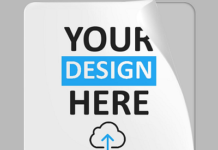
Is it time for you to start designing a new product?
Good product design is both an art and a science. It requires a lot of forethought, a lot of testing, and a lot of trial and error. As with anything, the first draft is rarely the only draft. There’s too much to consider.
Product development can be a lot of fun, but if you don’t want to waste money, you need to know the basics before you get started and start using up time and resources.
Not everyone knows how to design a product the right way, so they leave that to other professionals who can make their dreams come to life.
We’re here to give you a few tips on how you can create a successful product design that people are sure to love. Keep reading to learn more.
1. Start With Research
Every facet of your business should start with research. High-quality research sessions can save you a lot of time and money in the future.
You want to make sure that your product is unique. There are billions of products out there, and very few ideas are original. While it’s fine for your product to be similar, direct copies (even if they’re unintentional) can lead to legal battles down the road.
Take some time to do market research and develop a target audience or customer for the product that you have in mind. What does that person want or like? Where do they shop?
When in doubt, work with some professionals like those at Upstart Chicago who know how to start this process.
2. Make Sure There’s a Need or Demand
Part of doing research is knowing whether or not your product is actually viable. Are there people who want or need this product? Is there a real gap that this product is aiming to fill?
Not all products are going to be important or “useful” per se. Your product can be frivolous or silly, but you have to know that someone wants to buy it.
If there’s already a good solution to the problem that your product aims to solve, and that solution is cheaper, easier, or both, then you might want to go a different route.
3. Have a Solid Base
The bells and whistles of your product might be the most exciting parts, but you need to make sure that you’re starting with a strong foundation. No amount of extra features will make up for a shoddy idea.
Remember that you need to focus. When you add too many features without having that foundation, you risk getting away from what the product is for. Creating a product that’s mediocre for many purposes isn’t as good as creating a product that’s perfect for one.
Before you start adding extra features, you need to know that your product works as intended. Features might set you apart from other businesses within your niche, but that won’t matter if the main intention of your product gets ignored.
4. Aim for Simplicity
Speaking of features, less is more.
Again, features set you apart. People love having options. But when it comes to design, simple looks and functions are best.
You want to know that someone can look at your item and know what it’s for without having to do a lot of research. They want to take it out of the packaging and use it right away.
While it’s helpful to have instructions, they should be uncomplicated and almost unnecessary.
Consider the design from the point of view of someone who has never seen it before. Is its purpose obvious? Is it user-friendly?
If something isn’t quite coming together, it’s time to go back to the drawing board.
5. Function Over Form
Before your item gets beautiful, it needs to work. Remember, you’re trying to fill a gap with your product. No matter how pretty it is, it’s not useful if it doesn’t serve its primary purpose.
This is even true for more “aesthetic” items. How useful is a decorative statue if it doesn’t stand up? What do you do with a painting that you can’t hang?
Many people who’ve never developed a product before can get caught up in the appearance. That’s the fun part. All high-quality products start off as functional products first.
6. But Form Still Matters
Once your function is out of the way, you still need to focus on the product’s appearance.
Aesthetics vary depending on what kind of product that you’re creating. For most products, you want a simple and elegant design that’s also responsive and easy to understand.
Form matters in every industry. From software to power tools, people respond to the appearance of products (even if that response isn’t conscious).
7. Longevity Is Key
It’s tempting to create a product that your customers will need to replace. After all, then they can buy your next product. In the tech industry, this is planned obsolescence.
Unless you’re a leader in your niche, this isn’t a smart move. If people buy your product and discover that it stops working earlier than anticipated, they aren’t likely to spend money on any of your products in the future.
While this might mean that you’re not selling as many of these products, it also means that you can charge more and that people may recommend it to others. You’ll never become a leader in your industry with shoddy work.
You want to test your product against anything that could cause it to break or wear out in the future. You want to provide a great experience for your customers.
Good Product Design Is Serious Work
Designing a product can be a lot of fun, but it also takes some serious planning. Product design isn’t easy, but if you follow our tips, you’ll have a good chance at creating something that will fly off of the shelves.
It’s time to get to the drawing board.
For more helpful articles that can help you grow your business, check out the rest of the site.


















